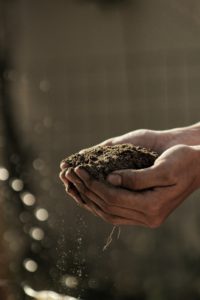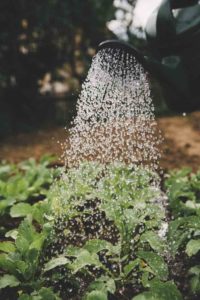To keep things really simple
Fertile soil is a must-have when you want your plants to thrive and grow. Understanding the basics of soil will definitely make your gardening projects more successful and enjoyable.
The relationship between your garden plants and the soil you use to grow them is quite interesting. Soil anchors a plant’s roots as well as provides a medium through which your plants can draw nutrients and water.
It also has a third benefit which is that it is a reservoir for oxygen. On the other hand, your plants or parts of plants will eventually die. When they do, they add organic matter to
It’s a win-win, really.
What is soil?
At
Amazingly, rocks are combinations of minerals that may even include organic matter. For example, granite is a combination of the minerals feldspar, quartz, and biotite. Limestone is an organic sedimentary rock created from the remains of what investigators believe are ancient shellfish and coral.
How rocks break down
The process in which rocks break down is called weathering. Weathering grinds the rock. In turn, it becomes the mineral portion of the soil that you use in your garden. Weathering is

There is also chemical weathering and it changes the composition of the rocks. This more times than not results in making them weaker and more prone to the pulverization process. Yes, water is usually involved in this process.
Chemical weathering occurs in three different ways.
- When water dissolves rocks.
- When minerals react with water chemically to form a new compound.
- Or when oxygen reacts with iron in rocks and oxidizes it.
There is a third culprit called physical weathering and it is based on climatic conditions. For example, changes in temperature make rocks expand and contract. Naturally, this causes pieces and layers to crack and fall off.
The forces involved in moving water, such as streams, rivers, and waves, push rocks together, creating smaller and smaller fragments. Likewise, in arid areas the force of the wind lifts and blasts away at larger rocks, eventually turning them into sand and soil particles.
Perhaps you always wondered where sand came from?
The bottom line is that weathering affects different types of rocks in different ways, which results in a wide variety of garden soils.
For example, soil that is derived from granite tends to be acidic. Because Granite is a hard material, the soil particles might be relatively large, especially when compared to soils derived from limestone.
In addition,
Climate affects soil
It goes without saying that climate has a strong effect on the formation of the soil you use. For example, soils that develop in a warm and wet environment, erodes quickly, and chemical weathering is especially fast. In addition, many of the minerals that act as
In turn, the soil becomes acidic and contains a large percentage of iron. Although they look interesting, these red or yellow soils will need additional fertilization to produce healthy plants.
Soils in arid environments are often low in nutrients. Chemical weathering is also slow. Without water, salts accumulate, which are detrimental to plant health.
When you visit an arid environment, the soil often needs to be strained, washed, with large quantities of water in order to remove salts before plants can be grown successfully. It also needs this leaching process to occur periodically thereafter to keep salt from building up.
The essential gardening point to remember is that soils in dry climates tend to be on the alkaline side.
